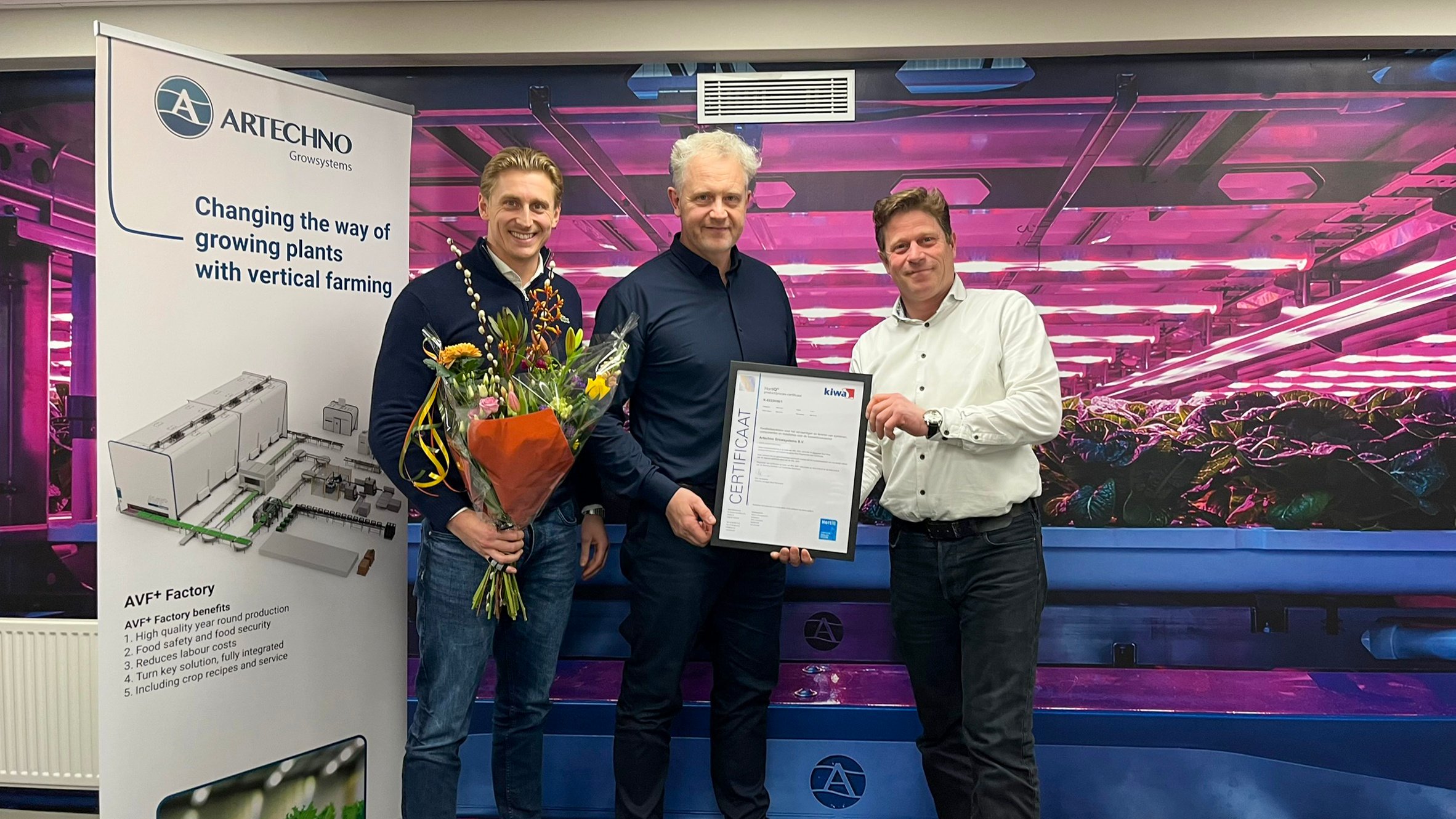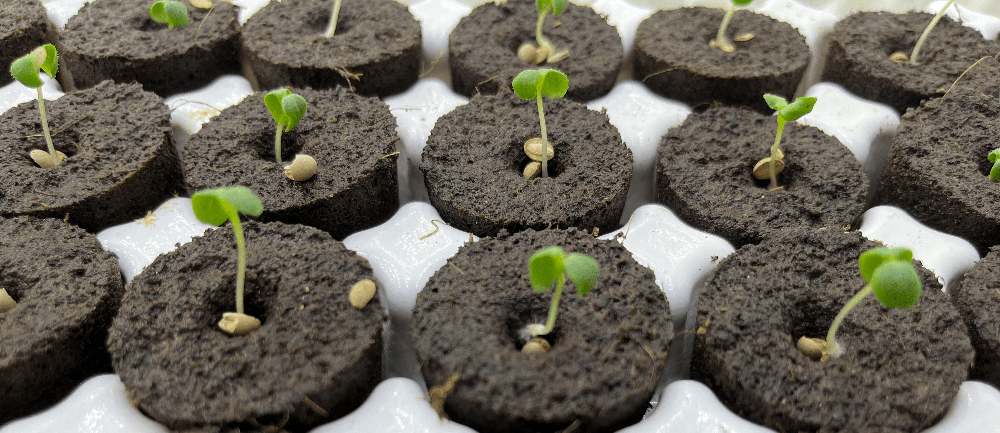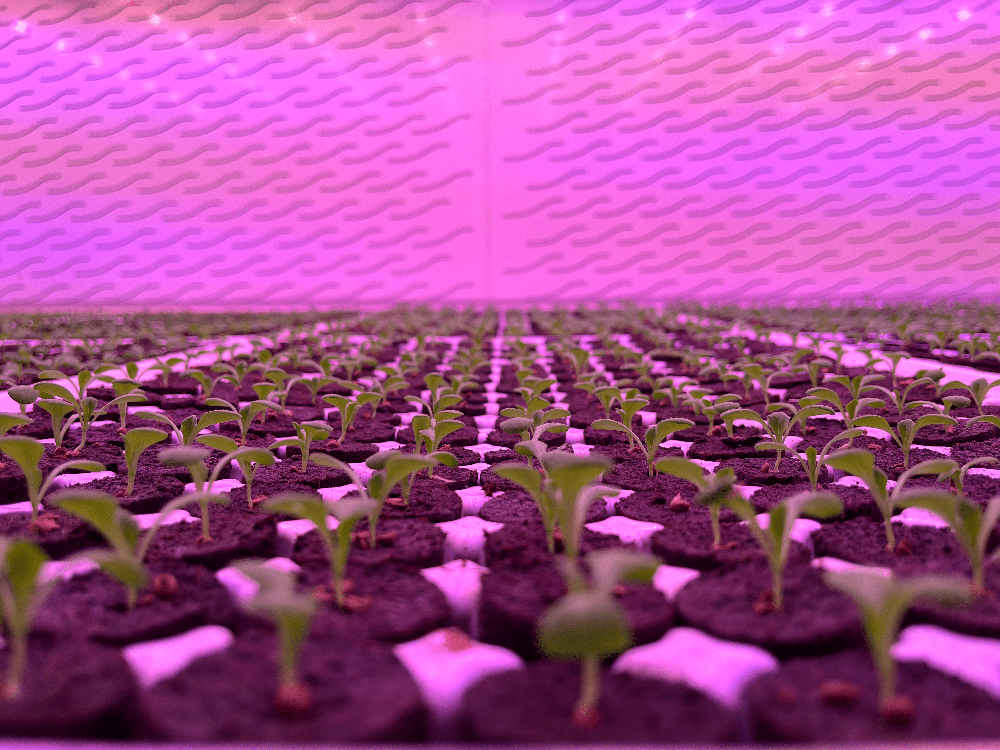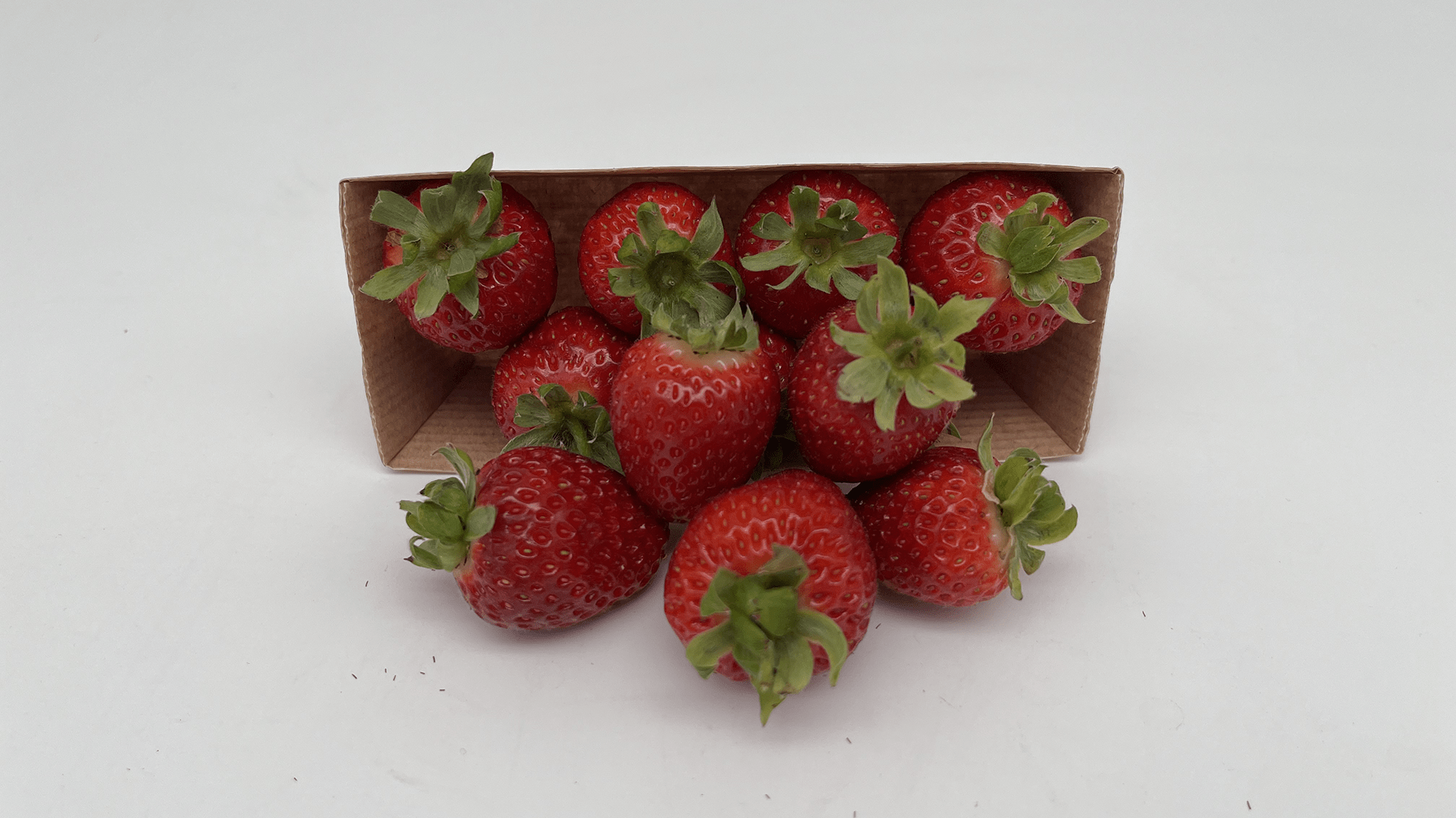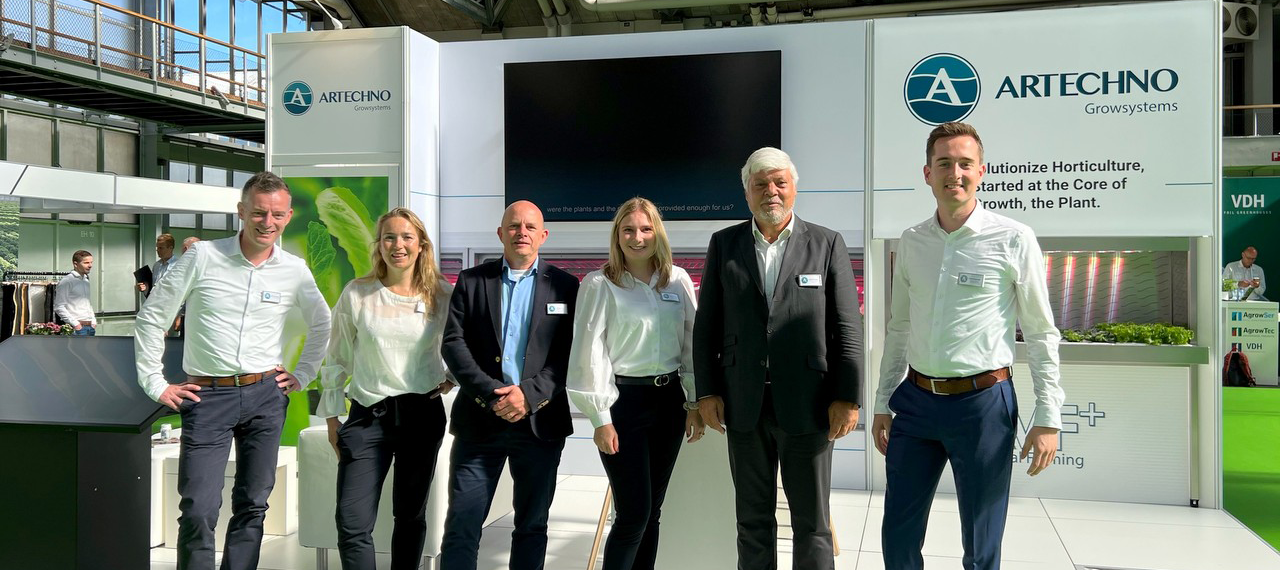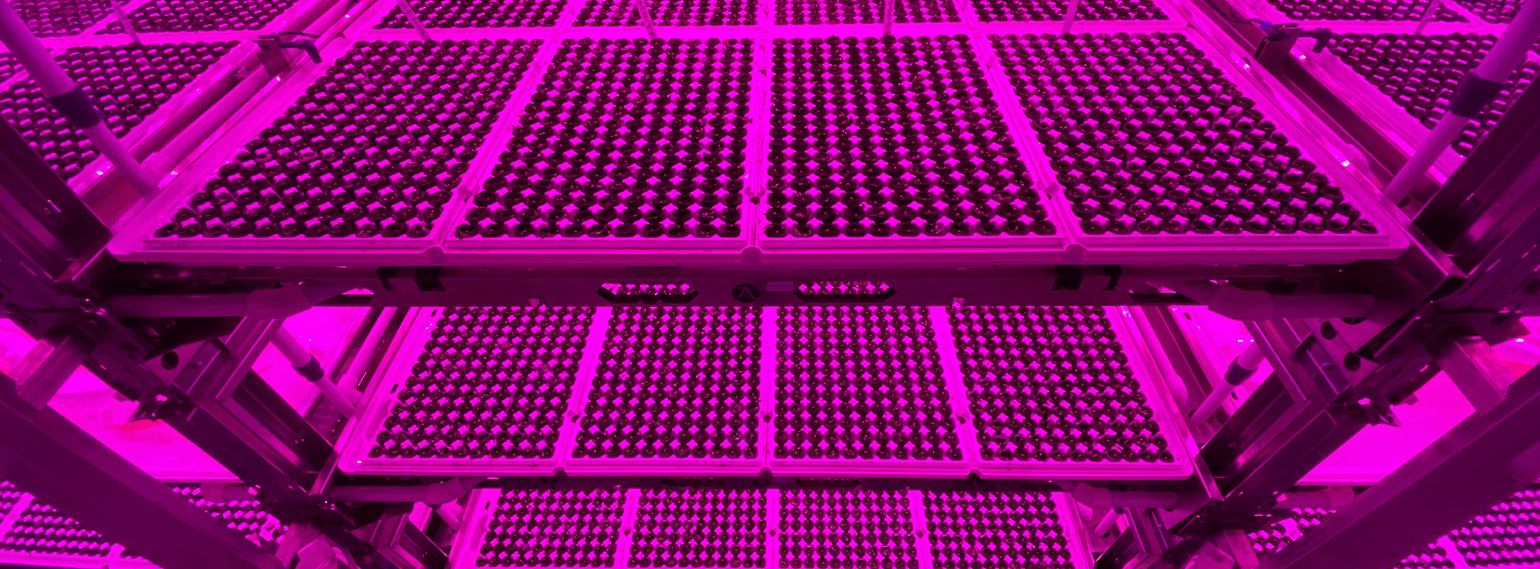What is vertical growing? See all the benefits!
Growing crops vertically is a revolutionary alternative to traditional farming. Read all about vertical growing in this article
Contents
Is vertical growing sustainable?
Vertical growing versus traditional, horizontal farming
Crops are better matched to buyers' needs
2 Challenges of vertical growing
What vertical growing entails at Artechno Growsystems
This article in brief:
- Vertical growing is a revolutionary alternative to traditional farming; in a vertical farm, crops are grown in multiple layers on top of each other
- Vertical growing offers numerous advantages over traditional agriculture, including no longer being dependent on seasonal factors
- Unique light recipes match the crop precisely to what the plant needs.
What is vertical growing?
In vertical growing, multiple layers are grown above one another, in other words, vertically.
This is done inside a vertical farm. In the farm, all environmental factors are fully controlled and optimized; think of:
- Light
- Temperature
- Airflow
- Humidity
- CO2
- Water
- Nutrients
These external conditions allow crops to grow optimally.
The external conditions can be manipulated to your discretion, resulting in the perfect plantlet.
Vertical growing allows varieties to be grown as they were intended: good quality, healthy, and full of flavor.
Canadian poet Brian Brett said, "Farming is a profession of hope.” Vertical growing has changed that.
9 Benefits of vertical growing
Vertical growing offers tremendous benefits for the grower, the buyer, and the crops. Below we list the 9 most significant benefits.
Benefit 1: Growing recipes
Growing recipes can be applied for vertical growing.
Growing recipes are a combination of multiple light settings and specifically set environmental factors to cultivate the perfect plant.
You can adapt these growing recipes to your own conditions and wishes, for example, in terms of the color and taste of the crop.
For any crop you would like to grow, you can create a unique nutritional and flavor profile with growing recipes; nothing is too crazy!
In addition, the recipes are adapted to the crop's growth stage, which contributes to the plant's optimal growth.
Benefit 2: Consistent production and quality
Because the crops are grown in a controlled environment, they are not affected by external factors such as pests, flooding, or storms.
This results in consistent crop production and quality.
Benefit 3: Growing year-round
With vertical farming, you are independent of the weather and other external factors. This allows you to grow crops all year round, contributing to food security.
In recent years, extreme weather conditions have been affecting food availability. Vertical growing can also be practiced under such extreme conditions, ensuring that your production never comes to a halt.
Still, for the time being, vertical growing will not be able to eliminate all food problems; you can read more about that here.
Benefit 4: Food safety
Because the crop in the vertical farm grows in a controlled environment, insects and bacteria cannot access the crop, ensuring the safety of the produce.
Consequently, pesticides are unnecessary, and this also contributes to food safety.
Benefit 5: Growing locally
Vertical growing makes it possible to produce food locally even when there is no fertile soil in the area.
Growing locally offers the following benefits
- You can match the quantity to local demand, preventing food waste, And by traveling shorter distances, it stays fresh longer
- The crops do not have to be transported over huge distances, saving costs and reducing spoilage
- It reduces the time between harvest and consumption, ensuring high nutritional values at the time of consumption
- It reduces environmental pollution, in part because transportation distances are drastically reduced
- The population is supplied with fresh food faster
- As a city, you are less dependent on another town, area, or country and will invest your money in your own economy
Benefit 6: Saving space
Vertical growing requires relatively little space and offers high productivity per square meter because you grow in several layers on top of each other.
Over horizontal cultivation, you can assume an increased productivity of +/- 600%.
Benefit 7: More efficient use of raw materials
With vertical growing, it is possible to precisely give the proper nutrients to the plant. Moreover, in many cases, the plug can be converted into biowaste.
Also, 95% to 99% less water is used than in traditional agriculture. [1]
Benefit 8: Less environmental impact
Vertical growing pollutes water, soil, and air less than traditional farming. This is in part due to the following:
- You can reuse raw materials more often
- No nitrogen is emitted during the growing
- No chemicals are used against insects and bacteria
Benefit 9: Can be set up anywhere
You can install a vertical farm anywhere without depending on weather, space, soil, or other conditions.
A vertical farm can be set up anywhere from Dubai to New York.
Is vertical growing sustainable?
All in all, it can be said that vertical growing is a sustainable alternative to traditional agriculture. This is because of the following aspects:
- As mentioned earlier, raw materials are used more efficiently, and 95% to 99% less water is used for growing crops
- No (agricultural) land is used, allowing the original nature to remain as is
- The biodiversity in the vicinity of a vertical farm is not affected
- No pesticides or other harmful substances are used.
- Despite the fact that a vertical farm requires a relatively large amount of energy, this can be generated from sustainable sources. Therefore, in optimal conditions, a vertical farm can produce negative CO2 emissions while in operation
Vertical growing versus traditional, horizontal farming
Traditional agriculture is reaching its limits. It is damaging to the environment by requiring a lot of resources and affecting biodiversity.
On top of that, the climate is changing, resulting in extreme weather conditions to which traditional agriculture is incredibly vulnerable. For example, drought can make farmland unusable.
Finally, traditional agriculture is associated with enormous food waste. According to the Food & Agriculture Organization, some 14% of all food grown is wasted after it is harvested and before it reaches the stores.
This is in part because:
- Supply and demand are mismatched
- Products spoil in transit
- Food is not stored properly
- Distribution is not always efficient
- Consumers choose a perfect crop without aberrations
Alternative cultivation methods, such as vertical growing, are therefore gaining popularity.
Vertical growing goes beyond the boundaries of traditional agriculture. It eliminates the need for farmland and allows for seamless matching of supply and demand.
Crops are better matched to buyers' needs
Vertical growing allows you to match crops' quality and characteristics to buyers' needs.
This is how it works. Certain light conditions affect the crops' production of antioxidants, vitamins, dyes, and flavors.
For example, far red causes a plant to stretch more, and blue improves its shelf life.
You can develop lighting recipes, to adjust the lighting conditions. You adapt the lighting to precisely the right spectrum, intensity, and frequency.
This has the advantage, on the one hand, that the plant grows optimally and, on the other hand, that you can adjust the characteristics of the crop to your own requirements, for example, in terms of nutrients, taste, shelf life, and color.
2 Challenges of vertical growing
Vertical growing is still evolving and presents two significant challenges in addition to its many advantages.
Firstly, not every crop is yet suitable for growing vertically. For example, tomatoes grow too high, carrots and potatoes grow in the ground, and crops such as rice and wheat are not suitable for growing in a vertical farm.
The crops mainly grown in vertical farms are leafy greens such as lettuce, arugula, microgreens, and herbs. This will not solve the world's food problems.
Secondly, vertical growing requires a substantial investment. But the operational costs are relatively low afterward due to the cost savings in labor, water, and nutrients, among other things. The AVF+ systems of Artechno Growsystems achieve an ROI of less than 5 years.
Read more about those systems below
That makes vertical growing interesting for growers who want to guarantee high output volumes.
What vertical growing entails at Artechno Growsystems
Artechno Growsystems provides turnkey solutions. In the factories, plants grow from sowing to packing in perfect conditions all year round.
Artechno Growsystems has developed innovative AVF+ systems (Automated Vertical Farm) using hydroponics and the ebb & flow method.
The AVF+ systems:
- Come with everything you need for vertical farming and large-scale crop production
- Require low labor costs, as few people are needed to run the farms
- Are scalable to the needs of the user
- Utilize a climate cell that creates the ideal climate for the crop, making it grow strong, healthy, and fast
- Use 95% less water
- Have an ROI of <5 years.
For example, the AVF+ Factory is one of Artechno Growsystems' fully automated vertical farms. In it, the plants get everything their hearts desire, such as the right light intensity, temperature, nutrients, CO2, airflow, and humidity.
Artechno Growsystems' vertical farms produce exactly the same amount of plants every day. With the continuous process, input and output are the same every day.
Are you interested in vertical farming? Or do you have any questions? Don't hesitate to contact us; we are happy to help you.
Source
[1] Tolga, A.C., et al. (2020). Evaluatie van Hydroponic System in Vertical Farming via Fuzzy EDAS Method. In: Kahraman, C., Cebi, S., Cevik Onar, S., Oztaysi, B., Tolga, A., Sari, I. (eds) Intelligent and Fuzzy Techniques in Big Data Analytics and Decision Making. INFUS 2019. Advances in Intelligent Systems and Computing, vol 1029. Springer, Cham (source).

